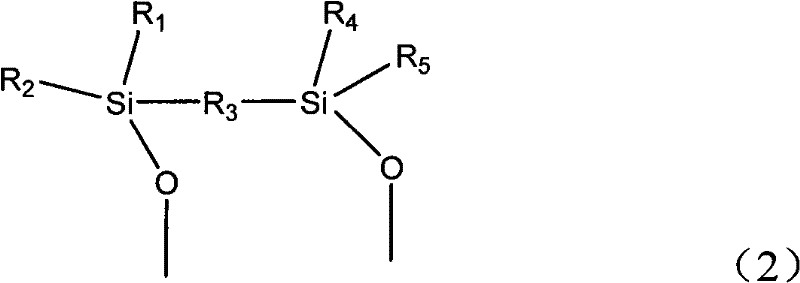Method for preparing alcohols by selectively hydrogenating aldehydes
A technology for selective hydrogenation and hydrogenation catalysts, applied in chemical instruments and methods, preparation of hydroxyl compounds, preparation of organic compounds, etc.
- Summary
- Abstract
- Description
- Claims
- Application Information
AI Technical Summary
Problems solved by technology
Method used
Image
Examples
Embodiment 1
[0060] Take a clover-shaped Ni-Cr-Mo-K / Al with a diameter of 3mm 2 o 3 Catalyst 50 grams (volume 72ml, the mass percentage content of Ni, Cr, Mo and K is respectively 22%, 8%, 4.5% and 2.2%, surplus is Al 2 o 3 , weight loss 1.9wt% when the temperature rose to 500° C. on the thermogravimetric analyzer), the catalyst was loaded into a fixed bed reactor (diameter 15 mm, length 400 mm, with two temperature display control points). After the reactor temperature is stabilized at 80°C, the hydrogen containing 2vol% trimethylmethoxyalkane is passed into the reactor, the flow rate is controlled at 300ml / min, and the temperature is raised to 120°C after maintaining 80°C for 2 hours. Keep for 1 hour to stop the hydrogen containing trimethylmethoxyalkane, add nitrogen to lower the temperature, and obtain catalyst Cat-1.
[0061] Comparison of Ni-Mo-K / Al by Fourier Transform Infrared Spectroscopy (FTIR) 2 o 3 and Cat-1, the characteristic peak of the methyl group on Cat-1 (~2970cm -...
Embodiment 2
[0066] Take a strip Cu-Cr / ZrO with a diameter of 3mm 2 -Al 2 o 3 Catalyst 15 grams (produced by Beijing Research Institute of Chemical Industry, volume 14ml, the mass percentage content of Cu and Mg is respectively 20.1% and 12.8%, the balance is ZrO 2 -Al 2 o 3 , weight loss 1.8wt% when the temperature rose to 500°C on the thermogravimetric analyzer), the catalyst was packed into a 500ml three-necked bottle, the three-necked bottle was placed in the oil bath, one of the three-necked bottles was connected to the cooling coil, one was connected to the thermometer, and Connect to the feed port. First, 80ml of p-xylene was poured into the three-neck flask, and after the temperature of the reactor was stabilized at 110°C, 8ml of hexamethylsilazane was passed into the reactor. After maintaining 110°C for 1 hour, the temperature was raised to 140°C. After the temperature was stabilized, the temperature was maintained for 1 hour and then lowered. The catalyst was taken out and d...
Embodiment 3
[0072]The catalysts of Example 1 and Comparative Example 1 were respectively applied to the hydrogenation of 3-hydroxypropionaldehyde. The hydrogenation reactor is a 100ml isothermal fixed bed, and the catalyst is 10.0g. The processing conditions of the hydrogenation reaction are shown in Table 1 (selectivity refers to 1,3-propanediol selectivity). After 1500 h of reaction, the amount of carbon deposition was compared by thermogravimetry-mass spectrometry.
[0073] The composition under the reaction conditions is shown in Table 1, wherein the liquid space velocity of 3-hydroxypropanal is 2.0h -1 , The molar ratio of hydrogen to 3-hydroxypropionaldehyde is 8.0, and the water content is 380ppm.
[0074] The results are shown in Table 1. The experiment shows that compared with the existing methods, the method of the present invention has high target selectivity, low carbon content on the surface area of the catalyst, and low deactivation rate.
[0075] Table 1 Catalyst catal...
PUM
 Login to View More
Login to View More Abstract
Description
Claims
Application Information
 Login to View More
Login to View More - R&D
- Intellectual Property
- Life Sciences
- Materials
- Tech Scout
- Unparalleled Data Quality
- Higher Quality Content
- 60% Fewer Hallucinations
Browse by: Latest US Patents, China's latest patents, Technical Efficacy Thesaurus, Application Domain, Technology Topic, Popular Technical Reports.
© 2025 PatSnap. All rights reserved.Legal|Privacy policy|Modern Slavery Act Transparency Statement|Sitemap|About US| Contact US: help@patsnap.com



